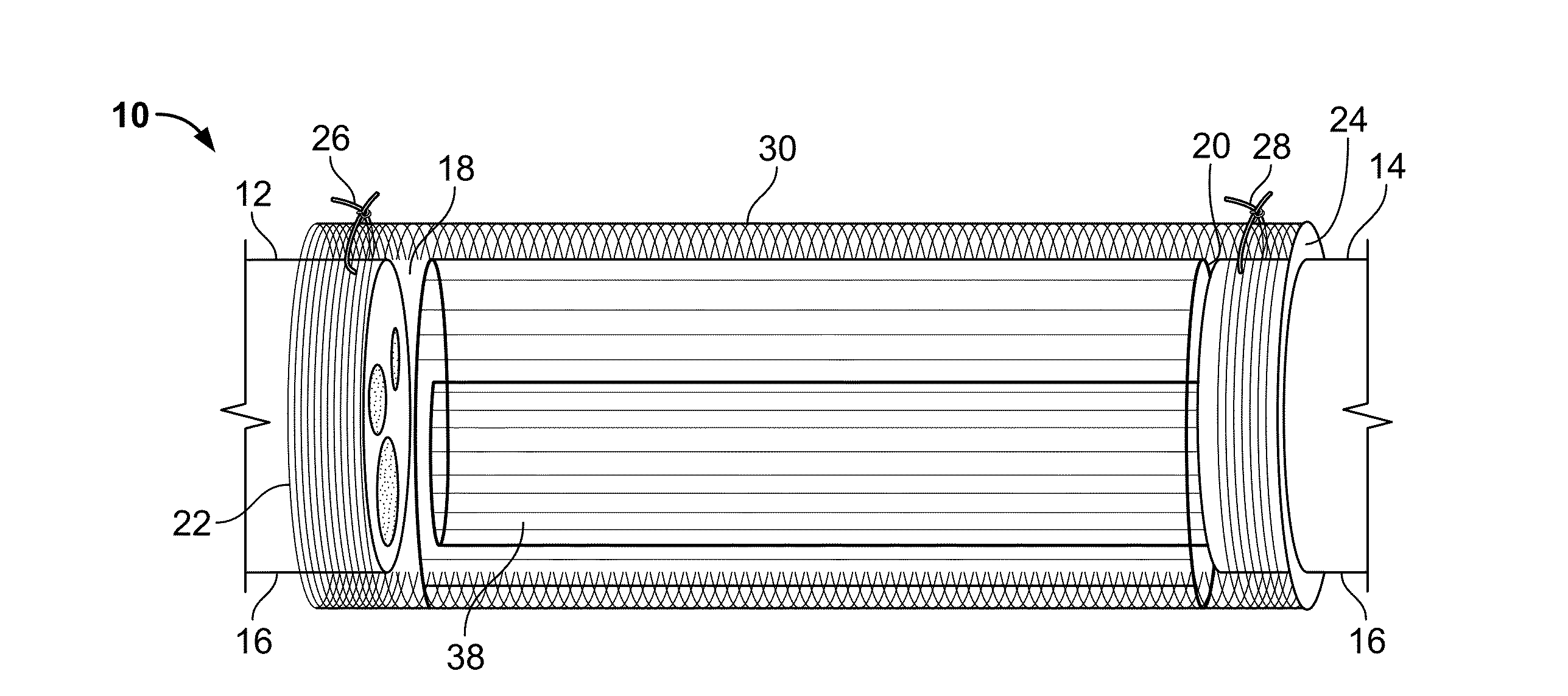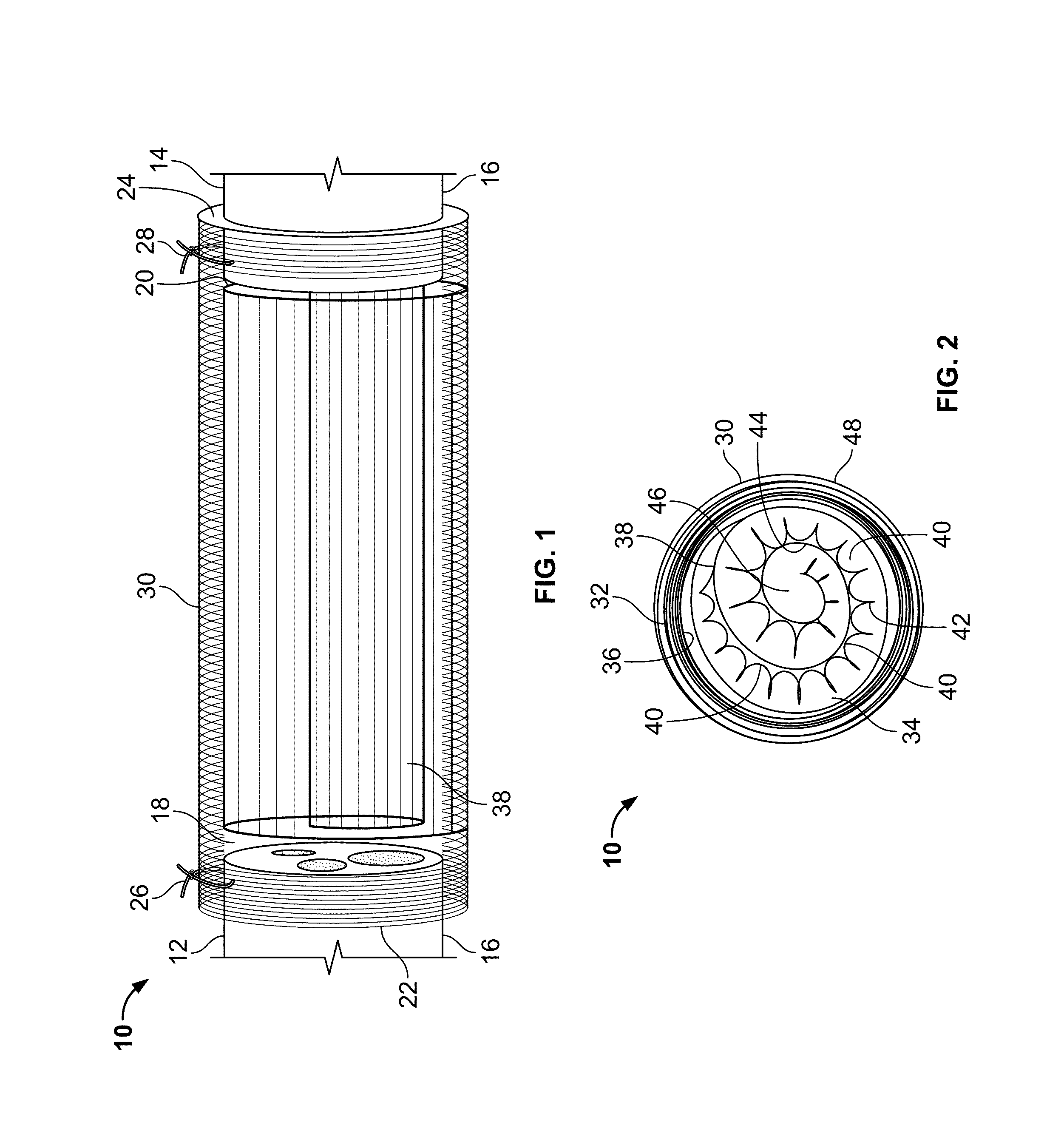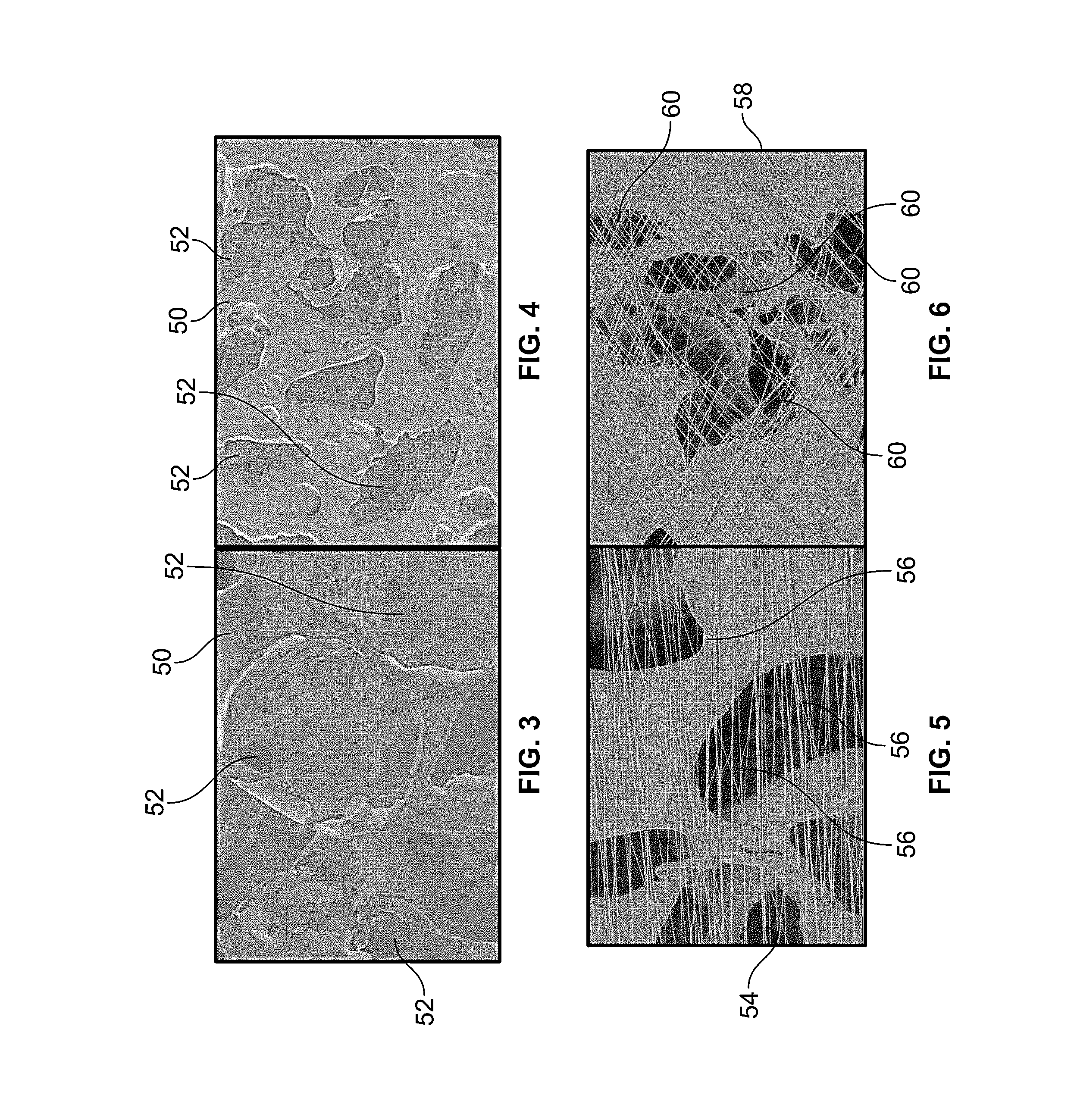Implantable nerve conduit having a polymer fiber spiral guidance channel
a polymer fiber spiral guidance and nerve technology, applied in the field of nerve regeneration, can solve the problems of inability to perform end-to-end suturing, each strategy suffers from a number of limitations, and cannot be used in end-to-end suturing, so as to reduce the length of recovery time, reduce wear and tear, and increase the surface area available
- Summary
- Abstract
- Description
- Claims
- Application Information
AI Technical Summary
Benefits of technology
Problems solved by technology
Method used
Image
Examples
Embodiment Construction
[0030]Embodiments of the present invention provide NGCs with integrated spiral structured porous sheets decorated with surface channels and electrospun fibers. Such NGCs provide superior mechanical strength compared to NGCs in the prior art, along with integrated multiple channels, stable aligned fibrous layers, good inter-cell communication, and high surface / volume ratios within the NGCs. Chambers at the distal and proximal ends of the NGC provide additional space for fitting nerve stumps in order to reduce the tension at the suture line between the NGC and the nerve stump. A dense outer fibrous tube on the outside of the spiral structured porous sheet can prevent the infiltration of scar tissue while the regeneration process takes place. One embodiment of the NGC of the present invention comprises a three-dimensional (3-D) spiral structured porous sheet having two chambers at the ends thereof. The spiral structure includes a highly porous polycaprolactone (PCL) sheet, which may be...
PUM
 Login to View More
Login to View More Abstract
Description
Claims
Application Information
 Login to View More
Login to View More - R&D
- Intellectual Property
- Life Sciences
- Materials
- Tech Scout
- Unparalleled Data Quality
- Higher Quality Content
- 60% Fewer Hallucinations
Browse by: Latest US Patents, China's latest patents, Technical Efficacy Thesaurus, Application Domain, Technology Topic, Popular Technical Reports.
© 2025 PatSnap. All rights reserved.Legal|Privacy policy|Modern Slavery Act Transparency Statement|Sitemap|About US| Contact US: help@patsnap.com



